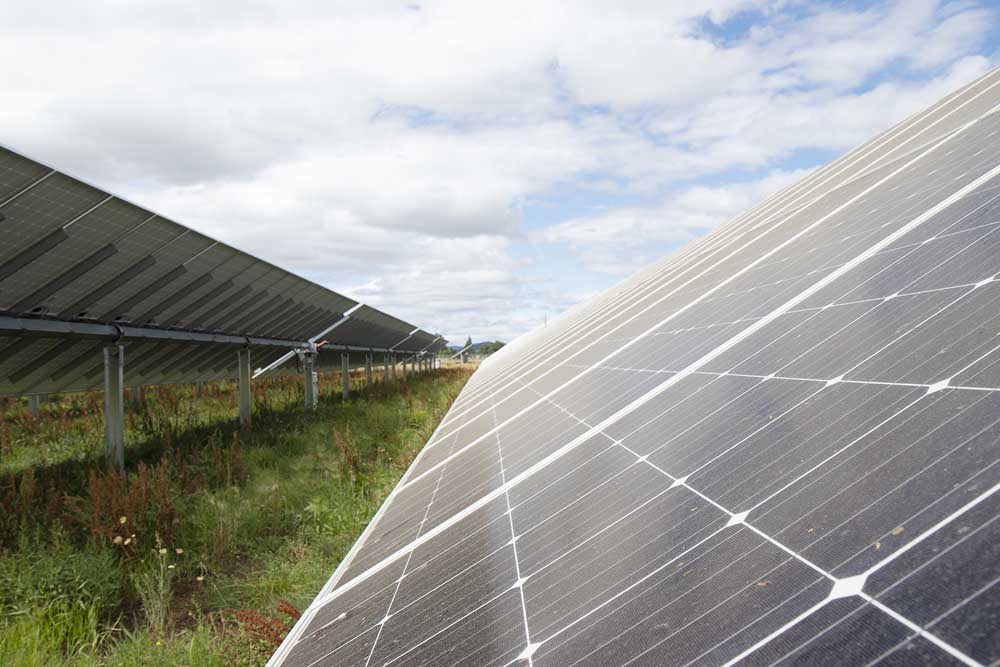Solar company rejects WDFW’s suggestions on fencing
Published 12:45 pm Wednesday, January 5, 2022

- A Washington state agency has trumped Yakima County's moratorium on solar developments.
The Washington Department of Fish and Wildlife’s ideas for keeping a solar project in Klickitat County from blocking animals are impractical, according to an energy developer.
Avangrid Renewables, the U.S. subsidiary of Iberdrola Group, a Spanish utility company, proposes to fence 670 acres of rangeland for the 100-megawatt Bluebird solar project 26 miles east of Goldendale.
The company plans to surround solar panels with nearly 8 miles of 8-foot chainlink fence. Fish and Wildlife suggested redesigning the project to create paths between and under fences.
A draft environmental impact statement, prepared for Avangrid by a consultant, says the department’s modifications were “not considered feasible for development.”
Fish and Wildlife’s lead on reviewing renewable energy proposals, biologist Michael Ritter, said Wednesday the department makes the recommendations for nearly all solar projects.
“We’re going to continue to hold the line on the openness of the landscape,” he said.
Democrats during the 2021 legislative session committed the state to carbon-free electricity by 2045, spurring proposals to put solar developments in Washington.
Some developers are seeking approval from the state’s Energy Facility Site Evaluation Council, while others are applying for permission from counties.
The Yakima County Farm Bureau, whose members include Klickitat County residents, has concerns about solar projects taking up farmland.
Fish and Wildlife has raised concerns about solar projects taking away wildlife habitat and disrupting the movement of animals.
Ritter said about 40 solar projects have been proposed or approved.
“We’re concerned about a landscape full of projects,” he said. “These projects have to be green for all, so there has to be give and take.”
Avangrid is seeking permission from Klickitat County to build its second solar project in the county. Construction on its nearby 150-megawatt Lund Hill solar project is underway.
For the Bluebird project, the company plans to lease land from private landowners and the state Department of Natural Resources.
The solar panels would take up rangeland now used for grazing cattle. The forage is sparse and the project would displace 9 to 14 cows, according to the report.
The Bluebird solar project would not convert any active cropland and would provide landowners with a steady income, according to the environmental report.
Fish and Wildlife suggested the Bluebird solar panels be enclosed in several smaller fenced areas, rather than one big enclosure.
The department also suggested raising the fence a foot above the ground and putting the panels along existing roads.
The smaller enclosures and roadside panels would take up more land, according to the draft EIS.
The fenced-off solar panels would not block any “known” big-game corridors, and small animals will be able to slip under gaps between the fence and uneven ground, according to the report.
Avangrid also cited safety rules for declining to leave more room below the fence.
Ritter said Fish and Wildlife will continue to work with Avangrid and other energy developers on designing solar projects.
“We don’t always 100% agree, but we do support renewables,” he said. “Our job is like a consultant. We make recommendations. We don’t have the power to make requirements.”
Efforts to obtain comment from Avangrid were unsuccessful. The company has installed nearly 8,000 megawatts of wind and solar energy in the U.S., according to the draft EIS.
A 30-day public comment period on the Bluebird draft EIS opened Thursday. The Klickitat County Planning Department will take comments until Feb. 4.
County officials expect to make a decision in May on whether to approve the project.






